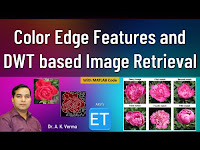Hello viewers. In this video, the evolution of Laplace transform, and Z-transform from Fourier transform is explained. It is explained how the problem of non-convergence of Fourier for some signals is overcome by Laplace and Z-transform for continuous time and discrete time signals respectively.
This lecture includes following points.
- Fourier Transform review (CTFT and DTFT).
- Problem with Fourier Transform.
- Birth of Laplace Transform.
- Birth of Z-Transform.



















